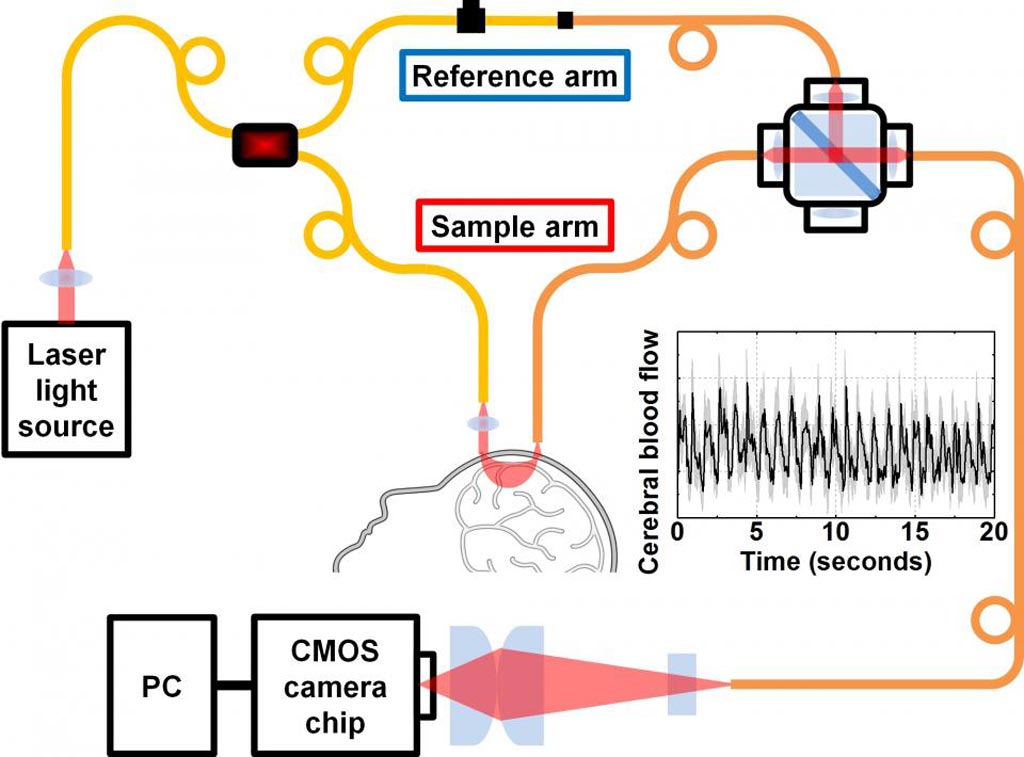Optical Technology Monitors Cerebral Blood Flow Dynamics
By MedImaging International staff writers
Posted on 12 May 2018
A new study describes how a digital camera can be used to measure blood flow in the brain of patients with stroke or traumatic brain injury (TBI).Posted on 12 May 2018
Developed by researchers at the University of California, Los Angeles (UCLA; USA), interferometric diffusing wave spectroscopy (iDWS) is based on transforming a standard complementary metal-oxide-semiconductor (CMOS) camera into a sensitive detector array by using multimode fiber (MMF) interferometry to identify weak light fluxes that probe deep into biological tissue. The method involves first splitting an emitted laser light beam into ‘sample’ and ‘reference’ paths, and then using the recombined signal to measure coherent light fluctuations.

Image: Laser light can measure blood flow in the brain of patients with stroke or traumatic brain injury (Photo courtesy of Srinivasan Lab/ UCD).
The sample beam goes into the patient's head and another, stronger, reference beam is routed so that it reconnects with the sample beam before going to the detector, boosting the signal. The boosted signal can measure about 20 speckles of light simultaneously on a single CMOS digital camera chip, instead of necessitating multiple independent photon-counting detector channels. According to the researchers, the highly sensitive and parallel measurement technique is significantly cheaper and more robust than using an array of photon detectors. The study was published on April 26, 2018, in Optica.
“Light-scattering methods are widely used in soft matter physics and biomedical optics to probe dynamics in turbid media. These methods typically rely on fluctuations of coherent light intensity, and therefore cannot accommodate more than a few modes per detector,” concluded lead author Wenjun Zhou, PhD, and colleagues. “This limitation has hindered efforts to measure deep tissue blood flow with high speed, since weak diffuse light fluxes, together with low single-mode fiber throughput, result in low photon count rates. Our setup is very promising, and the cost should be lower.”
Diffusing-wave spectroscopy (DWS) is an optical technique that studies the dynamics of scattered light in the limit of strong multiple scattering. It has been widely used to study colloidal suspensions, foams, emulsions, gels, biological media, and other forms of soft matter. If carefully calibrated, DWS allows the quantitative measurement of microscopic motion in a soft material by identifying speckles (very small spots).
Related Links:
University of California, Los Angeles














